Idea by
Jakob Harry Hybel
Call for ideas 2017
Church of (Ex)Change
Church of (Ex)Change

With the folk high school as a point of reference, the project proposes a new institution in Copenhagen: a School of Welfare that will transform one of the city’s empty churches into a place of semi-permanent residence for refugees coming to Copenhagen, as well as a meeting place for the city’s residents. Taking its cue from the original purpose of the church as a social space, but also as a space of learning, the project consists of three, partially overlapping programs: a public, permeable ground floor, which carries the arched interior of the church through to the outside. The spaces on top of the plinth is divided between private and semi-private dwelling spaces outside the church and spaces of learning focused inside the church. The project aims to communicate the core values of the Danish society in a tangible way to its newcomers, while making the newcomers a visible entity in the city, which would give the city’s residents a chance to gradually adapt and adjust to newcomers.

Existing conditions for refugees coming to Copenhagen.
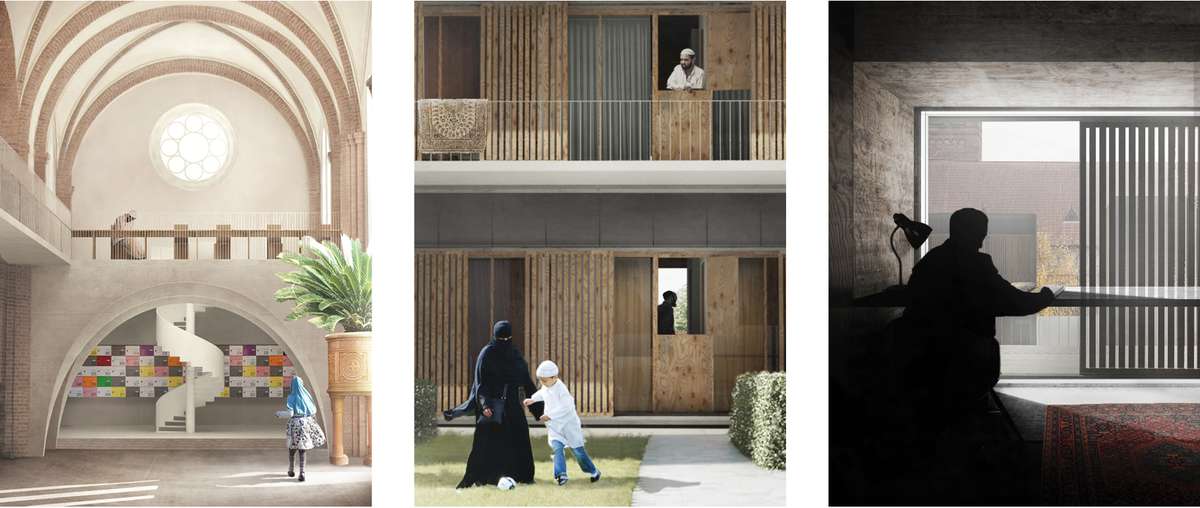
Proposed alternative for refugees coming to Copenhagen.

Design strategies and floor plans showing the public ground floor and the private first floor.

The new concrete plinth plays off the context, both the church's granite plinth and the arched walkways of the adjacent university campus.

A new public route through the church adds a new entrance to the campus.
Church of (Ex)Change
Church of (Ex)Change

With the folk high school as a point of reference, the project proposes a new institution in Copenhagen: a School of Welfare that will transform one of the city’s empty churches into a place of semi-permanent residence for refugees coming to Copenhagen, as well as a meeting place for the city’s residents. Taking its cue from the original purpose of the church as a social space, but also as a space of learning, the project consists of three, partially overlapping programs: a public, permeable ground floor, which carries the arched interior of the church through to the outside. The spaces on top of the plinth is divided between private and semi-private dwelling spaces outside the church and spaces of learning focused inside the church. The project aims to communicate the core values of the Danish society in a tangible way to its newcomers, while making the newcomers a visible entity in the city, which would give the city’s residents a chance to gradually adapt and adjust to newcomers.
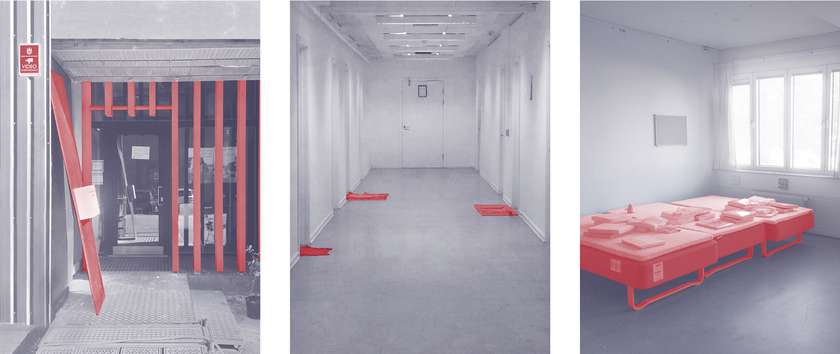
Existing conditions for refugees coming to Copenhagen.
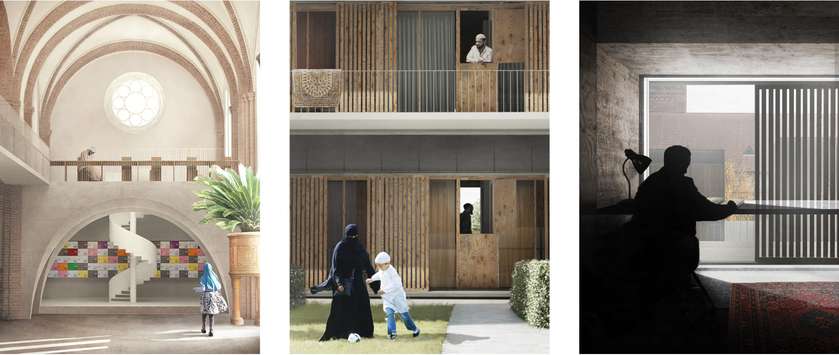
Proposed alternative for refugees coming to Copenhagen.
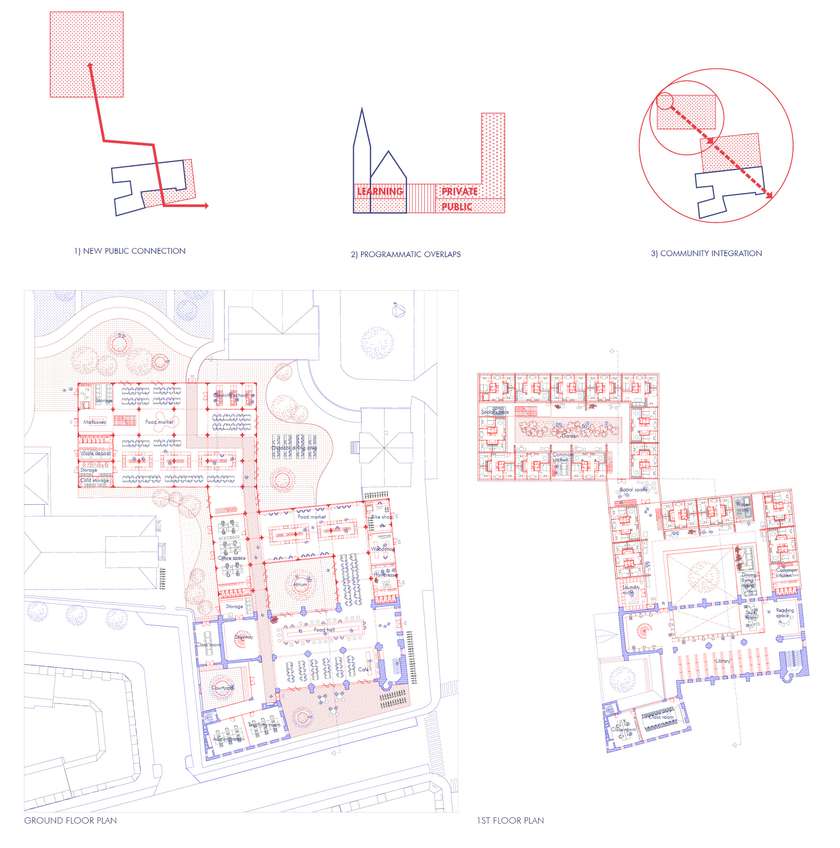
Design strategies and floor plans showing the public ground floor and the private first floor.

The new concrete plinth plays off the context, both the church's granite plinth and the arched walkways of the adjacent university campus.
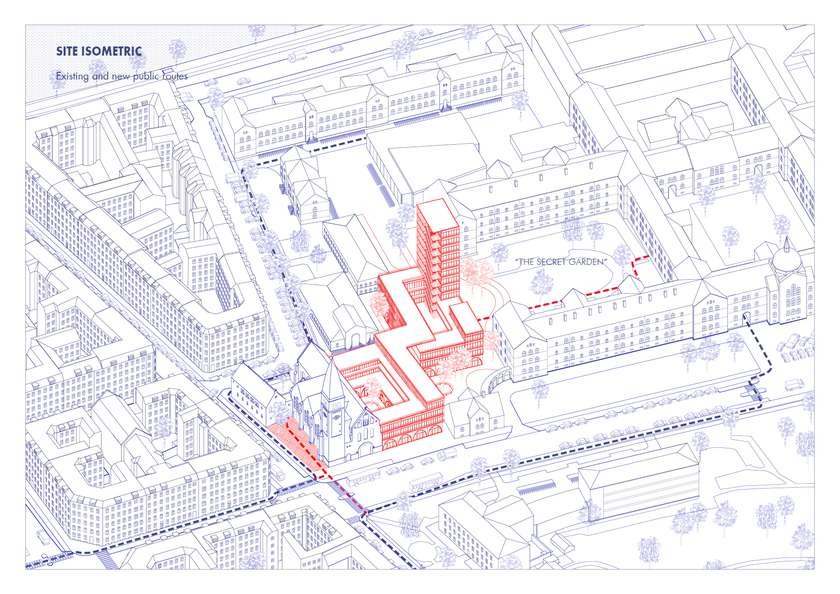
A new public route through the church adds a new entrance to the campus.